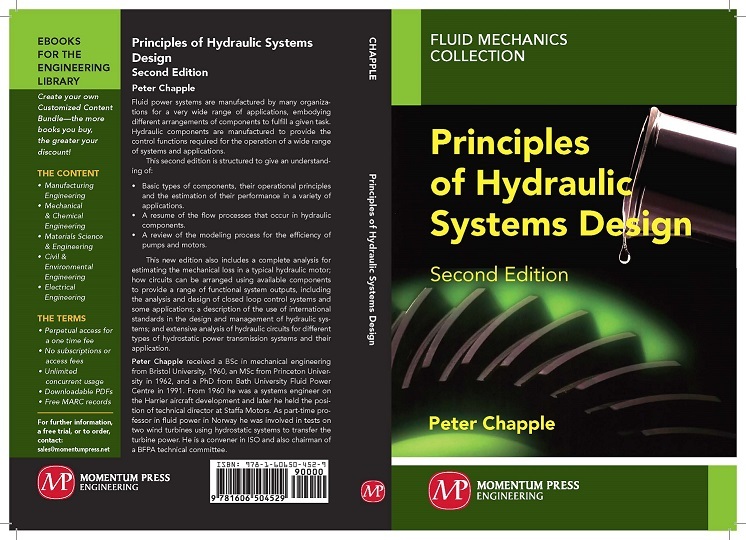

|
Edward Lowton
Editor |


|
The importance of contamination control in hydraulic systems
18 November 2016
The selection of inadequate filters or poor maintenance procedures can cause excessive contamination levels that may result in the unreliable operation and breakdown of hydraulic components.

Filtration systems should, therefore, be designed such that the fluid cleanliness level is better than that specified by the component manufacturers.
The loaded contact regions are typically where metal particles generated in pumps and also where particles in the incoming fluid will accelerate the wear process. The clearances in pumps, motors and valves are of the order of a few microns, and it is, therefore, essential that the particles in the fluid are maintained at a size that is appropriate for the prevention of wear in the clearances. Filters in a system clearly have to have a rating that protects the smallest clearance in the system.
As the fluid passes radially inward through the element of a high-pressure filter, contaminant is trapped in the material. With time, the pressure drop across the filter will increase at a rate that is dependent on the fluid condition and, eventually, this will cause the bypass valve to open, thus passing contaminated fluid directly into the system. However, the pressure drop can be monitored either mechanically or by electronic methods to give an early warning of bypassing, and this aspect is an important feature in a properly maintained system.
A major problem associated with filtration is that its effect cannot be seen because of the small size of particles that can cause poor system reliability and component failure. So, it is important that monitoring of the filter condition is carried out on a regular basis. Sampling techniques and the measurement of the contaminant concentration provide an improved basis for monitoring the condition of the hydraulic system. Of these, online monitoring is the most cost-effective method of achieving this.
The performance of a filter is based on its ability to trap particles, which is defined by its beta ratio, β, that is obtained from an internationally accepted laboratory-based test method.
The filtration media of most modern hydraulic filters consist of fibrous material, usually filaments of glass, and this gives the filter a different performance with size, which shows the performance of different grades of media when tested using the Multi-pass test. The rating of a filter is obtained from this data and is the micron size (x) where a stated β value is attained, usually β x = 200 or β x = 1,000. Note that calling the rating ‘absolute’ for these filters has been discredited due to the statistical nature of particle removal.
The performance of the filter has an immediate effect on the cleanliness level of the fluid downstream of the filter, and the higher the beta ratio the cleaner the fluid.
Filters are selected on the basis of achieving the desired contamination levels and having sufficient contaminant holding capacity to maintain the required contamination levels under the worst envisaged circumstances. Various selection methods are available from different filter manufacturers, but for consistency, the process developed by the British Fluid Power Association (BFPA) has been developed into two ISO Standards1,2 (see References). Their use is recommended, the majority of which are based on an absolute filter rating at a given β ratio.
In general terms, the downstream fluid quality varies as the reciprocal of the filter beta ratio.
Contaminant levels are denoted by an ISO code that is related to the number of particles of sizes greater than 4, 6, and 14 microns, respectively; if the analysis method is using an automatic particle counter, but if it is by microscope, the ISO 4406 Code is at -/5/15 microns.
The above article has been edited from content published in the book by Peter Chapple titled ‘Principles of Hydraulic Systems Design – second edition’, published by Momentum Press.
- BFPA launches safety training course
- The importance of correct hose sourcing
- Hose assembly skills: Train to gain
- BFPA launches training academy website
- Hose workshop launched
- Hose integrity, inspection and management
- Fluid power: Key to automation
- BFPA and Sannam S4 establish strategic alliance partnership across India, Brazil and China
- Don't be fooled by appearances
- No related articles listed

















